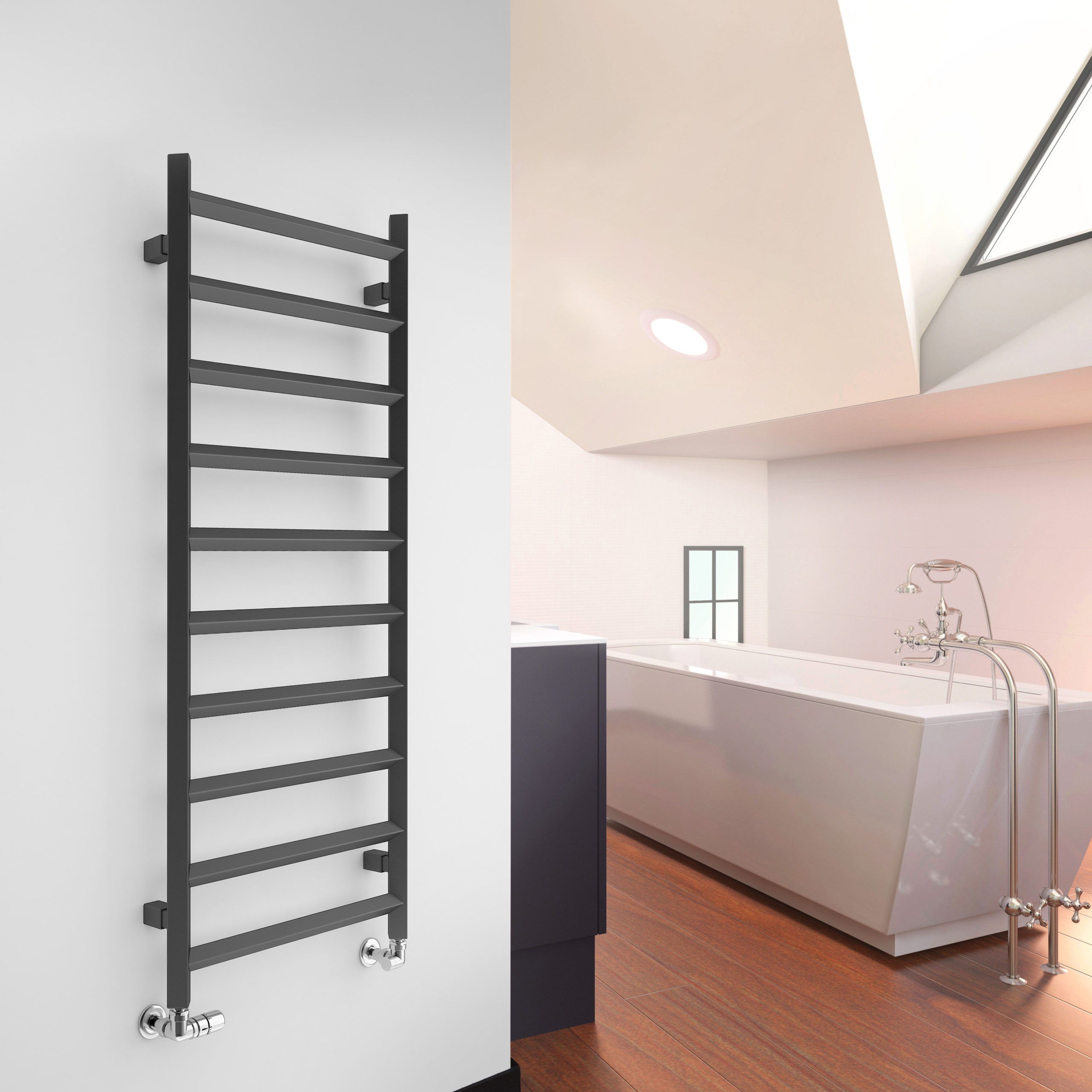The Benefits of Heated Towel Rails

Stepping out of a hot shower or bath into a cold bathroom can be a jarring experience. However, with the addition of heated towel rails, you can transform your bathroom into a haven of warmth and comfort. These stylish and practical fixtures offer a range of benefits that enhance both the functionality and ambiance of your bathroom.
Warmth and Comfort
Heated towel rails provide a constant source of warmth, ensuring that your towels are always dry and toasty. This eliminates the need to hang towels on radiators or wait for them to dry naturally, which can take a long time, especially in humid environments. The gentle warmth of a heated towel rail creates a luxurious and spa-like experience, promoting relaxation and well-being.
Types of Heated Towel Rails

Heated towel rails come in a variety of types, each with its own unique features, pros, and cons. Understanding the different types will help you choose the right one for your bathroom.
Electric Heated Towel Rails
Electric heated towel rails are the most common type, and they are a great option for those who don’t have access to a central heating system or want to have more control over the temperature. They work by using an electric element to heat up the towel rail, which then warms the towels.
- Easy Installation: Electric towel rails are relatively easy to install, as they simply plug into a standard electrical outlet.
- Controllable Temperature: They often come with a thermostat, allowing you to adjust the temperature to your liking.
- Cost-Effective: Electric towel rails are generally more affordable to purchase than hydronic models.
- Energy Efficient: Newer models often feature energy-saving features like timers and low-energy consumption.
Electric towel rails are a good choice for those who want a simple and affordable way to warm their towels.
Hydronic Heated Towel Rails, Horizontal heated towel rails bathrooms
Hydronic heated towel rails are connected to your central heating system. They use hot water from your boiler to heat the towel rail, which then warms the towels.
- Consistent Heat: Hydronic towel rails provide consistent heat, as they are connected to your central heating system.
- Energy Efficient: They are more energy efficient than electric models, as they use the same heating system as the rest of your home.
- Aesthetically Pleasing: Hydronic towel rails often have a more sleek and modern design.
Hydronic towel rails are a good choice for those who want a more energy-efficient and aesthetically pleasing option.
Dual Fuel Heated Towel Rails
Dual fuel heated towel rails combine the benefits of both electric and hydronic models. They can be connected to your central heating system and also have an electric element, allowing you to use them even when your central heating system is not in use.
- Flexibility: Dual fuel towel rails offer the flexibility to use either electric or hydronic heating.
- Energy Efficiency: They are more energy efficient than electric models, as they can use the same heating system as the rest of your home.
- Aesthetically Pleasing: Dual fuel towel rails often have a sleek and modern design.
Dual fuel towel rails are a good choice for those who want the best of both worlds.
Installation and Maintenance: Horizontal Heated Towel Rails Bathrooms

Installing a heated towel rail is a relatively straightforward process, but it’s essential to understand the different types of installation and the tools and materials required. Additionally, regular maintenance can ensure your towel rail operates efficiently and lasts for years.
Installation
The installation process for a heated towel rail depends on the type of rail you choose. Electric towel rails are generally easier to install than those that connect to your central heating system.
Here’s a step-by-step guide on how to install an electric heated towel rail:
- Choose the location: Consider the placement of your towel rail based on the size of your bathroom and the available electrical outlets.
- Gather the tools and materials: You will need a screwdriver, a level, a pencil, a drill, a stud finder, and the necessary electrical wiring and connections.
- Mark the location: Use a pencil to mark the location of the towel rail on the wall.
- Locate the studs: Use a stud finder to determine the location of the studs in your wall.
- Drill pilot holes: Drill pilot holes at the marked locations to ensure that the screws will go in smoothly.
- Install the mounting bracket: Attach the mounting bracket to the wall using the provided screws.
- Connect the wiring: Connect the electrical wiring to the towel rail and ensure it is securely connected to the outlet.
- Install the towel rail: Hang the towel rail onto the mounting bracket.
- Test the towel rail: Turn on the power and test the towel rail to ensure it is working correctly.
For more complex installations, such as those involving hard-wired towel rails or those connected to your central heating system, professional installation is recommended.
Professional installation ensures that the towel rail is correctly installed and meets all safety standards.
Maintenance
Maintaining your heated towel rail is crucial to ensure its longevity and efficiency. Here are some tips for maintaining your heated towel rail:
- Clean the towel rail regularly: Wipe down the towel rail with a damp cloth to remove dust and dirt.
- Avoid using harsh chemicals: Harsh chemicals can damage the finish of your towel rail.
- Check the thermostat: Regularly check the thermostat to ensure it is working correctly and adjust it as needed.
- Check for leaks: If you notice any leaks, turn off the power to the towel rail and contact a qualified plumber.
- Check the wiring: If you have an electric towel rail, regularly check the wiring to ensure it is not damaged or frayed.
